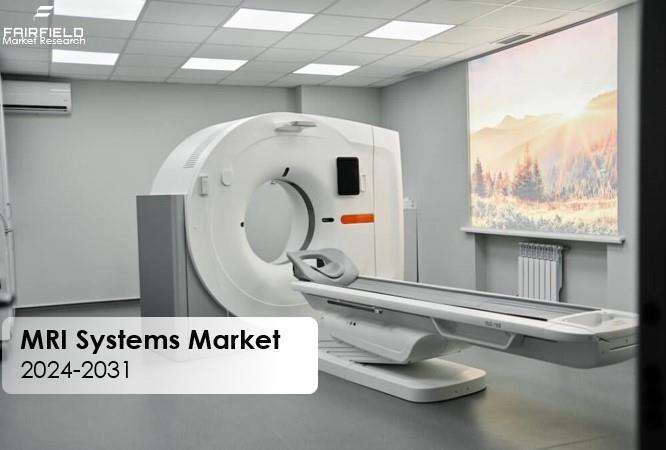MRI Systems Market

The global MRI systems market is poised to achieve a valuation of US$17 billion by the year 2031, exhibiting a healthy CAGR of 8.03% over the forecast period from 2024 to 2031. This growth is fueled by expanding healthcare infrastructure worldwide and the increasing demand for advanced diagnostics across various medical specialties.
For More Industry Insight: https://www.fairfieldmarketresearch.com/report/mri-systemsmarket
Key Market Highlights
The MRI systems market is experiencing robust growth due to the escalating incidence of chronic diseases such as cancer and neurological disorders. These conditions, coupled with a rising number of trauma cases, are boosting the global demand for medical equipment.
Technological advancements in MRI scanners, including the development of high-strength scanners, are attracting significant attention from key market players. The adoption of rapid MRI (rMRI) technology in emergency and trauma centers is also contributing to market expansion.
Regional Insights
North America currently dominates the global MRI systems market with a substantial market share of 37%. Meanwhile, the Asia Pacific region is projected to witness the highest growth rate
of 7.4% throughout the forecast period. The growth in Asia Pacific is driven by expanding medical tourism and increasing investments in healthcare infrastructure.
Market Evolution and Comparative Analysis
From 2018 to 2023, the MRI systems market demonstrated resilience and growth, achieving a notable growth rate of 4.7%. This growth was propelled by technological advancements, expanding healthcare expenditure, and the increasing clinical applications of MRI across various medical specialties.
Despite temporary challenges posed by the COVID-19 pandemic, the MRI systems market rebounded swiftly, paving the way for continued expansion and innovation. The market's evolution underscores its adaptability and robust growth prospects moving forward.
Regulatory Influence and Market Dynamics
Regulatory frameworks play a pivotal role in shaping the MRI systems market, ensuring patient safety, image quality, and data privacy. Stringent regulations mandate features like patient monitoring and emergency stop procedures, influencing the design and manufacturing of MRI systems.
Additionally, regulations drive innovation in affordability, image quality standards, and data security, thereby shaping the overall market landscape and accessibility.
Challenges and Growth Barriers
High initial costs associated with MRI systems remain a significant barrier to market growth. Operational expenses, including maintenance and helium gas costs, further add to the economic burden for healthcare providers. Declining reimbursement rates for MRI procedures also pose challenges, affecting market accessibility and adoption rates.
Opportunities and Future Trends
The MRI systems market presents opportunities for manufacturers to enhance affordability and accessibility, particularly in developing regions. Innovations in design and financing models can make MRI technology more attainable for healthcare providers in resource-constrained settings.
Cloud-based solutions and remote reading services are emerging trends that could revolutionize MRI accessibility, especially in remote areas lacking on-site specialists.
Competitive Landscape
The global MRI systems market is characterized by intense competition among key players such as GE Healthcare, Siemens Healthineers, and Koninklijke Philips N.V. These companies are focusing on innovation, strategic partnerships, and geographic expansion to maintain and expand their market share.
